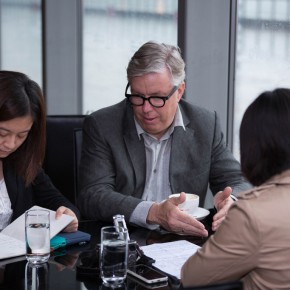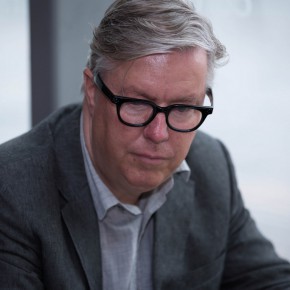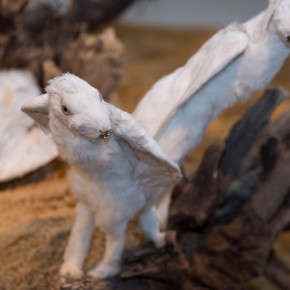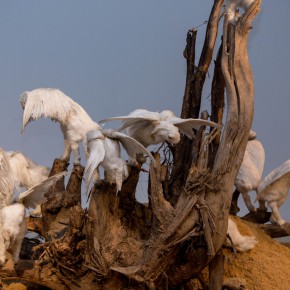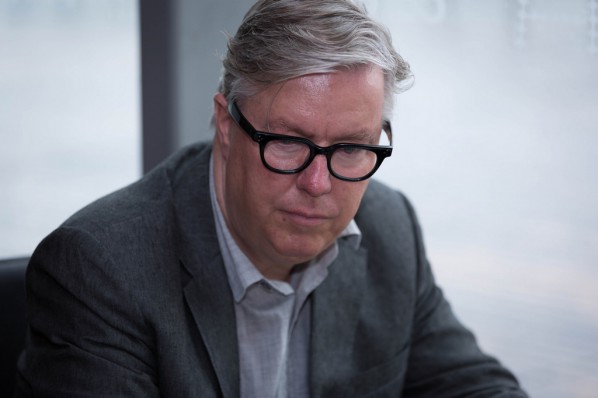
CAFA ART INFO: The CCAA Chinese Contemporary Art Award has experienced 15 years of evolvement, how did you get involved in this award as a member of the jury? During the period of being a jury, how have you see the role of the Award developing?
Lars Nittve: I got involved as a jury member quite late on. I think the first time was 2011, 2011 for the Art Creative Award and 2012 for the Artist Award or Art Award. But I learned about it earlier, because I had colleagues in Europe and in America who have been participated in this award and came back and told me about the experience. So I was aware of this Award almost from the beginning, at least 10 to 13 years ago. I think that the role of this award has changed over the years because when it started in 1998, it was a totally different situation in terms of information both in the West and in China.
CAFA ART INFO: In practice, how do you see the regulations of the CCAA organization, does it advocate for Justice, Fairness and Independence, away from the officials?
Lars Nittve: Well, there is no one absolute, sort of what we have called it, independent. I mean everyone works in the art world in a way, if you write, if you curate, if you are a director, you are not an outsider. Of course, you always have some aliens as you have a certain role. But I do think that the organizations of CCAA, as far as I have been able to see, have always had five lots of juries. If you have people who have one type of background, one type of interest and you also have jury members with other interests so typically they are at least independent of the commercial market to a extent, even though they may represent institutions, for example.
CAFA ART INFO: In this international exhibition, your part of responsibility as a consultant involved what kind of practical works and what was the preparation like?
Lars Nittve: My involvement was at a quite an early stage of the exhibition. First in discussions with Anna Liu and NBC about how to celebrate the anniversary, what to do if it is an exhibition, what sort of exhibition for these things. I was also involved in the discussion about who should be the curator for it and who should lead the project. Secondly, I was involved at an early stage with the responsible curator. We had a long meeting in Hong Kong when he was there together with Uli Sigg and Anna. We discussed his concerns and the strengths and all sorts of various aspects that came within the terms and the time pressure, time line and budget etc. Actually, most aspects to do with the exhibition were sort of defined or clarified in Hong Kong. My main concern at that meeting was whether there would be enough time to achieve all these very ambitious projects and I was updated by Anna Liu primarily in terms of how it was progressing, if there might be, compromises, which were very few, surprisingly enough. I had questions like, if you could not do it, what are you going to do, is it ok to do it like that or if it is ok, you can do like this. My role was kind of like an advisor, a partner for discussion and to be supportive. I am extremely impressed by the result now although I just saw a little bit of the exhibition. So I am very proud to have been the advisor for the exhibition.
CAFA ART INFO: When did you actually get involved in the consultancy work?
Lars Nittve: It was at the end of autumn last year, though we started seriously in December. I think one would also say that five months in a Western museum directing was a very short time while five months in China is a much longer time. I understand things could be done very fast.
CAFA ART INFO: How did you decide to celebrate the 15 years anniversary instead of 10 years or 20 years to hold an exhibition?
Lars Nittve: Ten years ago, I was not really involved in the CCAA Art Award, so you need to ask Uli Sigg about that. But I think that probably there is a sense, I mean now I am speculating actually, as ten years have passed, I felt that it was like a short time. It felt like that the time had passed really fast, and there wasn’t enough to look back. Now I can imagine that there is a new impression that has been developing, that the difference between 1998 and 2014 is actually quite big, and suddenly you have an historically perspective. Maybe 10 years was not enough to have that perspective.
I only walked around the exhibition for about 20 minutes all together, but I think you get a strong sense of the historical development of the period which actually has been a big change both in artistic production but also in thinking about art and the perceptions of art in China, both inside China and outside China during the period, that’s a strong sense to get, so 15 years is a good decision.
CAFA ART INFO: As you mentioned, there will be some problems during the process of organizing the exhibition. What did you think was the hardest part of organizing this exhibition, as a big project, including 15 years of history?
Lars Nittve: I do not think it was a project had more problems than normal, I mean, all exhibitions have issues. It is a challenge in terms of time, budget and other constraints of course, so I do not think there were any particular problems. I think that the big question is always when you represent artists, who in this case have been winning prizes, how you represent them, did you represent them with works they made 15 years ago or 30 years ago, did you represent them with their new works? That’s something you cannot do without a dialog with the artists, which also takes time, but I am really impressed by how the curator has managed to talk to the artist, and the artists have even created, in some case, new works or works have been recreated for this exhibition. I found that was very impressive. But of course, that was the biggest challenge, the work that they did 15 years ago, maybe does not exist anymore, may have been sold to someone else, how you are going to deal with this, which is a practical and perceptual problem. But this problem has been solved and simplified by the curator discussing with the artists, which I think is a good way forward.
Such as Bai Shuangquan, who was received an award in 2012, he was actually represented with work from 2007, so that works from before he got the award were exhibited, while in other cases, there are examples that some works are from after artists were given the award. I do not think you can establish a rule about what is right, but to come to a decision about that, come to an agreement with the artists, also about how they should be represented and make that work with the concept of the exhibition. I think that’s the biggest curatorial challenge.
This is clearly a complicated matter, because the selection of work both represents a historical moment in a way, represents an artist, and it has to work as an exhibition as a whole as well. So there are many things you really need to balance together.
CAFA ART INFO: We all know that Uli Sigg is a very important collector of Chinese contemporary art from an early stage. Recently, he donated much of his collection to Museum Plus. In addition, he is also the organizer of this award. How do you think of the influence of Uli Sigg on Chinese contemporary art?
Lars Nittve: I think that he influenced it, unavoidably, in many different ways. Partly, he was one of the very few people who were actually buying works by many of the artists in the early years, 1980s for example; his choices are already known, probably he had an impact on how arts could develop or on the perceptions of the artist. So what is already known he had an impact maybe without thinking about it. Later, I mean, he tried to put together a collection that not only represented his taste but was a worldly representation of what was happening in Chinese contemporary art. So he not only collected big name artists, but also artists who were less known and work in other cities to create a wider picture. By doing that, bringing that collection together, he is a collector who really attempted to construct some sort of history of Chinese contemporary art.
I think it’s important to remember that there is no true story and there is no false story or any kind of history and of course this is the same as Chinese contemporary art. Now we have a fantastic situation of having more than 1,500 works from his collection, but we still continue to find works, mostly historic works and new works to add to the story from other perspectives where other curators are involved. Also we get donations from other donors from other aspects that also complement the story that Uli Sigg has been sort of saying. Anyway, we will not tell the true story, we will tell a story.
CAFA ART INFO: As Uli Sigg has donated much of his collection to M plus Museum, does that mean M plus Museum will spend more time cooperating with Uli Sigg on the organization and promotion of the CCAA Award in the future.
Lars Nittve: We have not decided anything about that. We have supported CCAA in 2012, 13 and 14. So we have sponsored CCAA, there is no decision about the future continuity of doing that or not. So nothing is decided about the future relationship.
CAFA ART INFO: The donation of Uli Sigg has now become a focus of discussion among art circles. How did you see the debates among them? Do you think Uli Sigg’s behavior contradicts his own principle that his collections will never be sold?
Lars Nittve: So then the sale part, that’s more complicated to explain. It is very rare that someone is prepared to give away a full collection of more than 1,500 works. It happens very seldom in the world. Uli Sigg quite early on announced that he was not going to keep the collection forever until he died. So he is someone who a lot of museums around the world were trying to persuade to give the collection to them, like the Museum of Modern Art, Tate Modern. Also he was in discussion with museums here in China. When you are in a situation like that, you are like someone chased and called everyday by museum directors like me, you develop a certain suspicion, you know, museum directors always want donations. So this was something that I proposed, as a way of showing our strong commitment to the collection. It was not just that we simply wanted it, we actually made a commitment. What we did was that we paid, for a small group of works, 47 works. We paid a sum that was the equivalent of 12% of the total value of the entire collection. This model has been used in similar cases internationally in America, UK and Germany before, where the museums have done the same things and always with the aim of showing that they are really committed to the collections. So this was why it happened.
CAFA ART INFO: The Museum Plus is a unique case of establishing a work team without the building of architecture, how are you going to work with the current team at this moment? What kind of exhibitions are you going to organize after the establishment of the building?
Lars Nittve: The whole idea with M plus is to build a museum from inside out, so we started with a small group to develop the ideas of the museum, we expanded the team and developed the idea of building a collection and then we started to think about the building, because we need to know what sort of building we need for the collection. So it really started with ideas and moved towards the material building. Instead of selecting architecture, then to think about what should be in the building, we did it the other way around. The team is very important and well constructed, we have 17 curators, some more senior, some more junior, half of them are from Hong Kong, about 25% are from other parts of Asia, and about 25% are form Europe and America. We try to create a dynamic where we have a clear anchor in this part of the world, but we also have expertise with influential perspectives from other parts of the world. So we will have a full and complex picture of the whole world.
The way we see a museum is we see the museum not as a building, but as a meeting place between art, artists and the public. Basically what we do in the museum is to negotiate the meetings between these two parties, which means you have to optimize the artists so they can do what they want to do without any compromise, and at the same time, we try to make art as accessible, acceptable for the public. We will not only work with art like I said, we also include architecture, design, cinema and so far.
CAFA ART INFO: You are quite familiar with both the Chinese art and the Western art and were once the director of Tate Modern and Stockholm Museum. Why did you choose to be the director of M plus Museum, is it because of your interest in Chinese contemporary art? How did you look at contemporary art in China and in the West? What do you think is the position of Chinese contemporary art globally?Lars Nittve: The reason why I was attracted to this job is very simple. It’s not because I was an expert in Chinese contemporary art, it was more because I am a very curious person in terms of creating a museum, and I think that’s sort of the potential of the museum if we can get it right. So the first thing I have to do was to get collaborators on all the Asian aspects. My view before I came here was immersed in Chinese contemporary art, what happened from the no name group in the 1970s until the end of the 1990s, was an almost unique moment in the history of art, the sort of rapid development in China specifically during that period in terms of both adopting a concept of art that was not established in that system, and rapidly developing its own languages totally unique in terms of a short time span and the richness that was developed. It should be documented and researched and presented. Hong Kong attracts me because it shows the aspects of the story that may not be shown in other places. Therefore, I found it is really important to be here.
Journalist: Zhu Li, translated by Xing Lunan and edited by Sue/CAFA ART INFO



